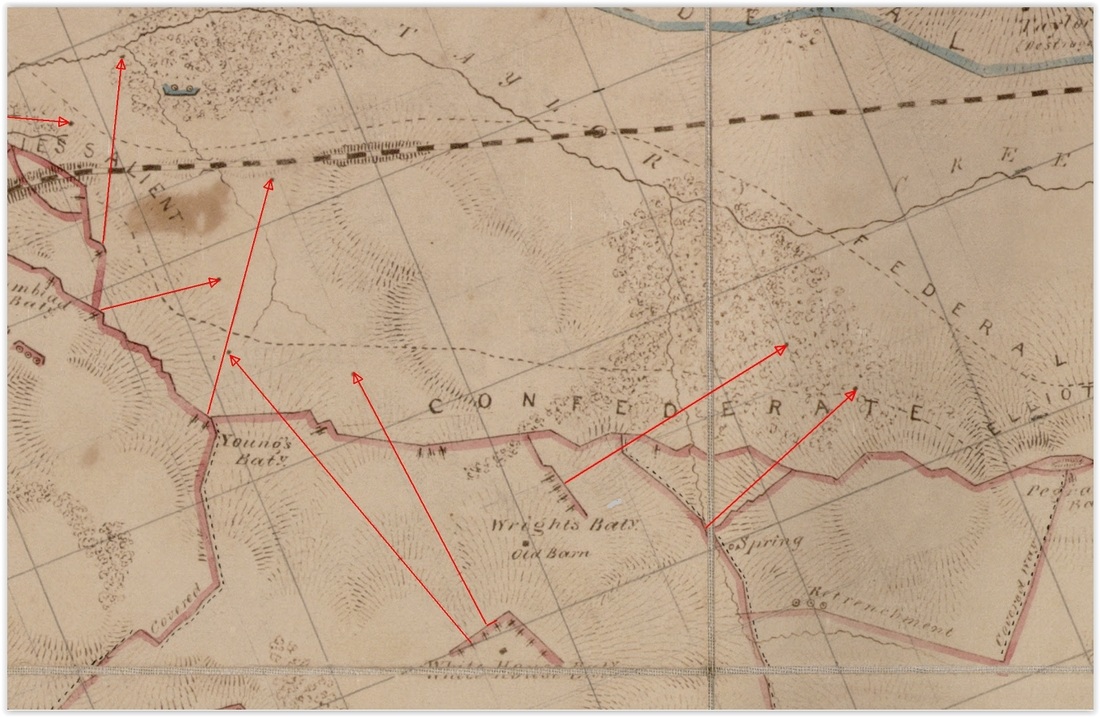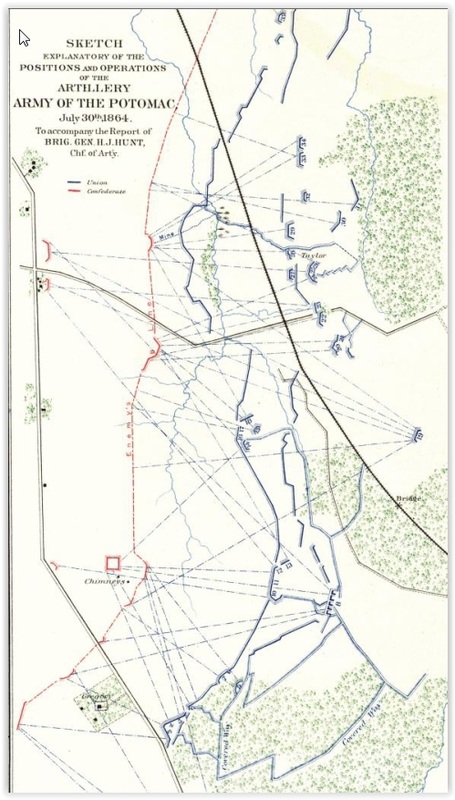Confederate map showing the encroaching Union positions on July 13. 1864.
Confederate guns sweep between the lines
Batteries were placed to command specific sectors of the opponent's lines, to oppose and silence the enemy's batteries, or to sweep areas where the enemy might advance. Individual guns were fixed with the range and direction of particular locations within their purview. This detail from the ca. July 13, 1864, Confederate map contains lightly inked gun trajectories, outlined here with red arrows. The map documents guns placed to command the ground between the lines. The fields of fire of other guns and mortars depicted on the map are not specified.
According to Confederate artillerist, Jennings Cropper Wise in The Long Arm of Lee (p 841):
"The works comprising the line of defense at Petersburg were by far the most pretentious which the Con federates had yet occupied. With the exception of the portion of the line recently established by Beauregard when forced back on the 17th, they had been laid out by engineer officers and constructed in advance by slave labor. Every advantage of terrain had been taken and a broad field of fire for artillery cleared in front of the line. Of course there were defects, but to a large extent these were corrected as they developed, and the works throughout were rapidly extended and improved. The trenches at Cold Harbor had barely afforded cover for the infantry, and the epaulments for the guns were there of the crudest kind, but now the artillery was to fight behind real cover and placed to the best advantage after careful reconnaissance of the approaches".
Another illustrated example is OR Atlas_PLATE_LXIV_No.3, which depicts Federal artillery fields of fire during the Battle of the Crater, when artillery fire commenced along the Union line.
According to Confederate artillerist, Jennings Cropper Wise in The Long Arm of Lee (p 841):
"The works comprising the line of defense at Petersburg were by far the most pretentious which the Con federates had yet occupied. With the exception of the portion of the line recently established by Beauregard when forced back on the 17th, they had been laid out by engineer officers and constructed in advance by slave labor. Every advantage of terrain had been taken and a broad field of fire for artillery cleared in front of the line. Of course there were defects, but to a large extent these were corrected as they developed, and the works throughout were rapidly extended and improved. The trenches at Cold Harbor had barely afforded cover for the infantry, and the epaulments for the guns were there of the crudest kind, but now the artillery was to fight behind real cover and placed to the best advantage after careful reconnaissance of the approaches".
Another illustrated example is OR Atlas_PLATE_LXIV_No.3, which depicts Federal artillery fields of fire during the Battle of the Crater, when artillery fire commenced along the Union line.



